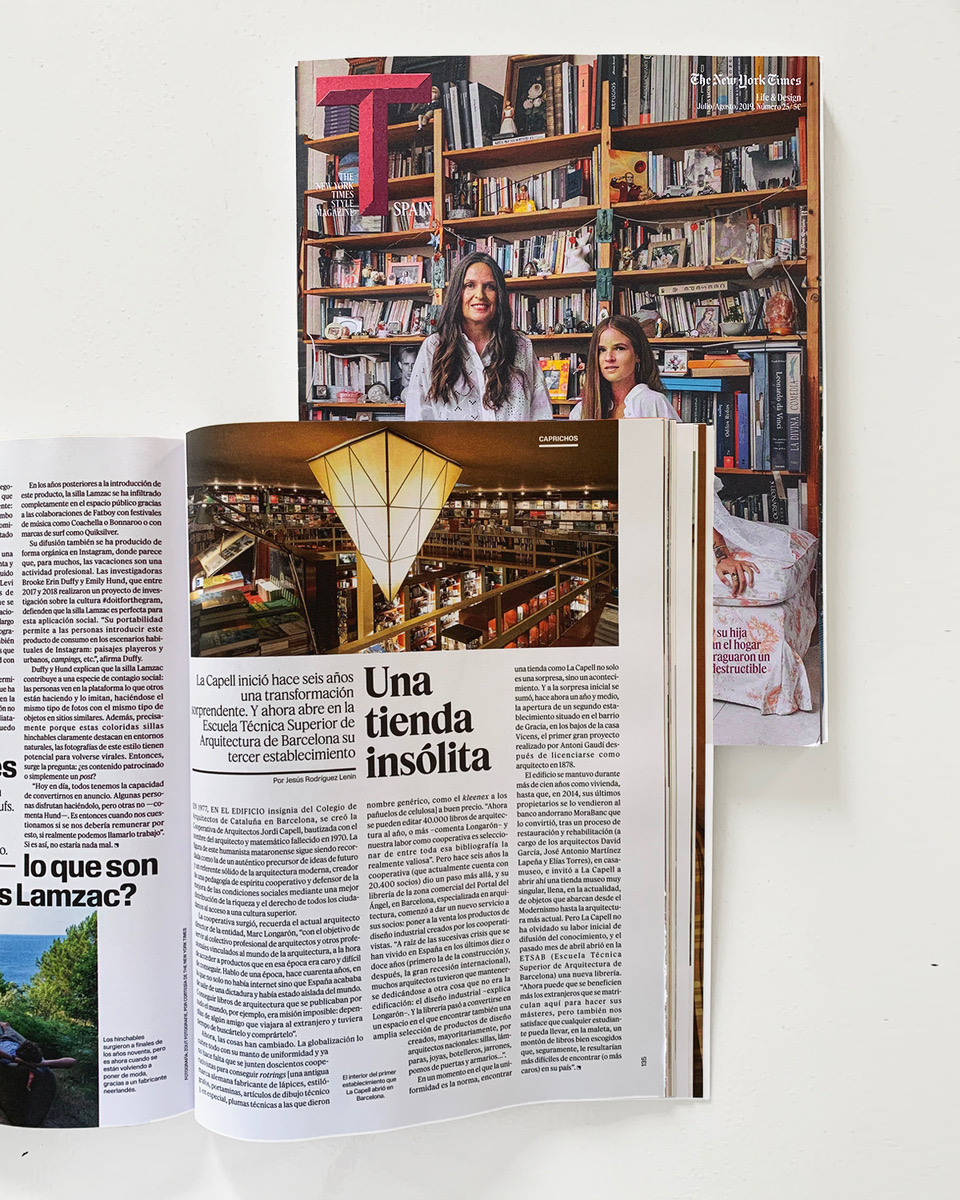
- Posted at 17/09/2019
- in News

The New York Times Style Magazine (Spain):
"An unusual store"
La Capell began a surprising transformation six years ago. And now it opens its third establishment at the Barcelona School of Architecture
by Jesús Rodríguez (27 August 2019)
In 1977, in the flagship building of the College of Architects of Catalonia in Barcelona, the Jordi Capell Architects' Cooperative was created, named after the architect and mathematician who died in 1970. The figure of este humanist from Mataró continues to be remembered as an authentic precursor of ideas for the future and a solid reference of modern architecture, creator of a pedagogy of cooperative spirit and defender of the improvement of las social conditions through a better distribution of wealth and the right of all citizens to access a higher culture.
The cooperative was created, recalls the current architect director of the entity, Marc Longarón, "with the aim of serving the professional group of architects and other professionals linked to the world of architecture, when it comes to accessing products that at that time were expensive and difficult cil obtain. I'm talking about a time, forty years ago, in which not solo there was no internet, but Spain had just come out of a dictatorship and had been isolated from the world. Getting architecture books that were published all over the world, for example, was mission impossible: you depended on a friend who traveled abroad and had time to look for it and buy it for you." The interior of the first establishment that La Capell opened in Barcelona.
Now, las things have changed. Globalization covers everything with its mantle of uniformity and it is no longer necessary for two hundred cooperative members to get rotrings [a former German brand manufacturer of pencils, fountain pens, mechanical pencils, technical drawing articles and, especially, technical pens to las that gave generic names, such as the kleenex to cellulose handkerchiefs] at a good price. "Now you can publish 40,000 architecture books a year, or more," says Longarón, "and our job as a cooperative is to select the really valuable one from among all that bibliography." But six years ago the cooperative (which currently has 20,400 members) dio a step further, and its bookstore in the Portal del Ángel shopping area in Barcelona, specializing in architecture, began to provide a new service to its members: to put on sale the industrial design products created by the cooperative members. "As a result of las successive crises that have been experienced in Spain in the last ten or twelve years (first that of construction and, later, the Great International Recession), many architects had to keep dedicating themselves to something other than building: industrial design," explains Longarón. And the bookstore became a space where you can also find a wide selection of design products created, for the most part, by national architects: chairs, lamps, jewelry, bottle racks, vases, doorknobs and cabinets...".
At a time when uniformity is the norm, finding a store like La Capell is not only a surprise, but an event. And to the initial surprise was added, a year and a half ago, the opening of a second establishment located in the Gracia district, on the ground floor of the Vicens house, the first major project carried out by Antoni Gaudí after graduating as an architect in 1878.
The building remained for more than a hundred years as a home, until, in 2014, its last owners sold it to the Andorran bank MoraBanc, which converted it, after a process of restoration and rehabilitation (by the architects David García, José Antonio Martínez Lapeña and ELÍas Torres), into a house museum, and invited La Capell to open a muy unique museum shop there. It is currently full of objects ranging from modernism to the most current architecture. But La Capell has not forgotten its initial work of disseminating knowledge, and last April it opened a new bookstore at the ETSAB (Barcelona School of Architecture). "Now foreigners who enroll here to do their master's degrees may benefit more, but we are also pleased that any student can carry, in their suitcase, a lot of well-chosen books that would surely be more difficult to find (or more expensive) in their country."
Original article published in the July-August 2019 issue of olaThe New York Times Style Magazine.





